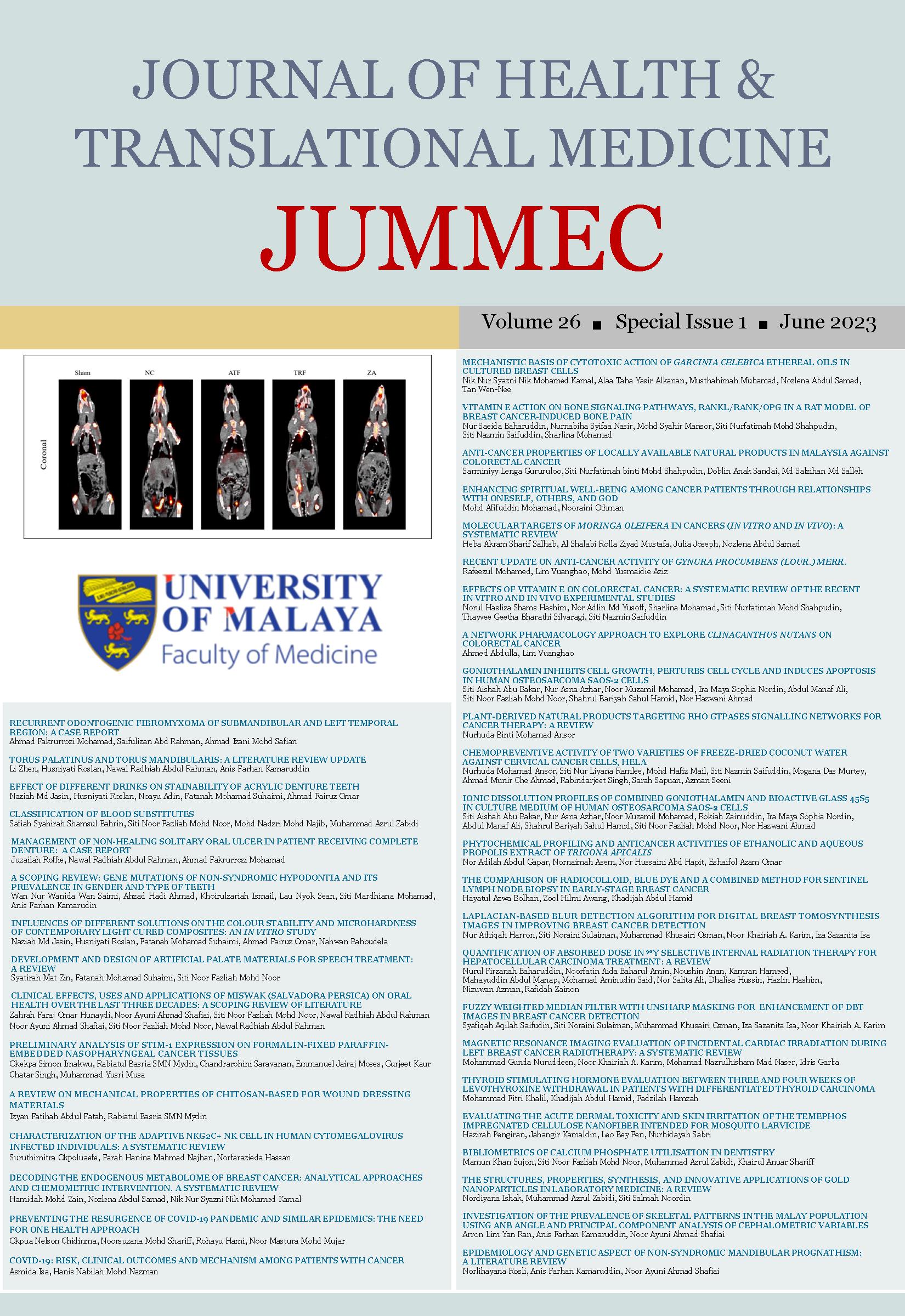INFLUENCES OF DIFFERENT SOLUTIONS ON THE COLOUR STABILITY AND MICROHARDNESS OF CONTEMPORARY LIGHT CURED COMPOSITES: AN IN VITRO STUDY
Received 2022-12-09; Accepted 2023-03-18; Published 2023-06-06
DOI:
https://doi.org/10.22452/jummec.sp2023no1.31Abstract
Despite the accumulation of dental plaque, adsorption of colourant pigment from foods and beverages was found to influence the quality of aesthetic restorations. The study aimed to evaluate the influence of different solutions on colour stability and microhardness of microhybrid and nanofilled composite resins. This project was a laboratory based experimental study. Three types of composite resins were used; microhybrid (FiltekTM Z250), nanohybrid (FiltekTM Z250 XT) and universal nanocomposite (FiltekTM 350 XT). A total of 135 disc-shaped specimens were prepared and were randomly divided into five subgroups (n = 9): artificial saliva, mouthwash, carbonated drink, energy drink and coffee. Samples were immersed in the solutions at time intervals of 24 hours, 7 days, 14 days, 21 days and 28 days. All specimens were assessed for the staining effect using a spectrometer (QE65000) and microhardness evaluation using the Vickers indenter (LECO LM 248AT, St. Joseph, Michigan, USA). Data on spectrometer colour spectrum and surface hardness were subjected to a one-way ANOVA and Tukey HSD test at a significance level of P < 0.05. There was a significant difference in discolouration between all three types of composite resins when immersed in all solutions regardless of the pH values (P < 0.05). Vickers hardness test showed statistically significant microhardness among all composite resins on Day 28. The staining medium caused significant discolouration and decreased the hardness of all the materials tested. Microhybrid composite resin reported the lowest colour variations and resistance to hardness test.
Downloads
Downloads
Published
Issue
Section
License
All authors agree that the article, if editorially accepted for publication, shall be licensed under the Creative Commons Attribution License 4.0 to allow others to freely access, copy and use research provided the author is correctly attributed, unless otherwise stated. All articles are available online without charge or other barriers to access. However, anyone wishing to reproduce large quantities of an article (250+) should inform the publisher. Any opinion expressed in the articles are those of the authors and do not reflect that of the University of Malaya, 50603 Kuala Lumpur, Malaysia.


